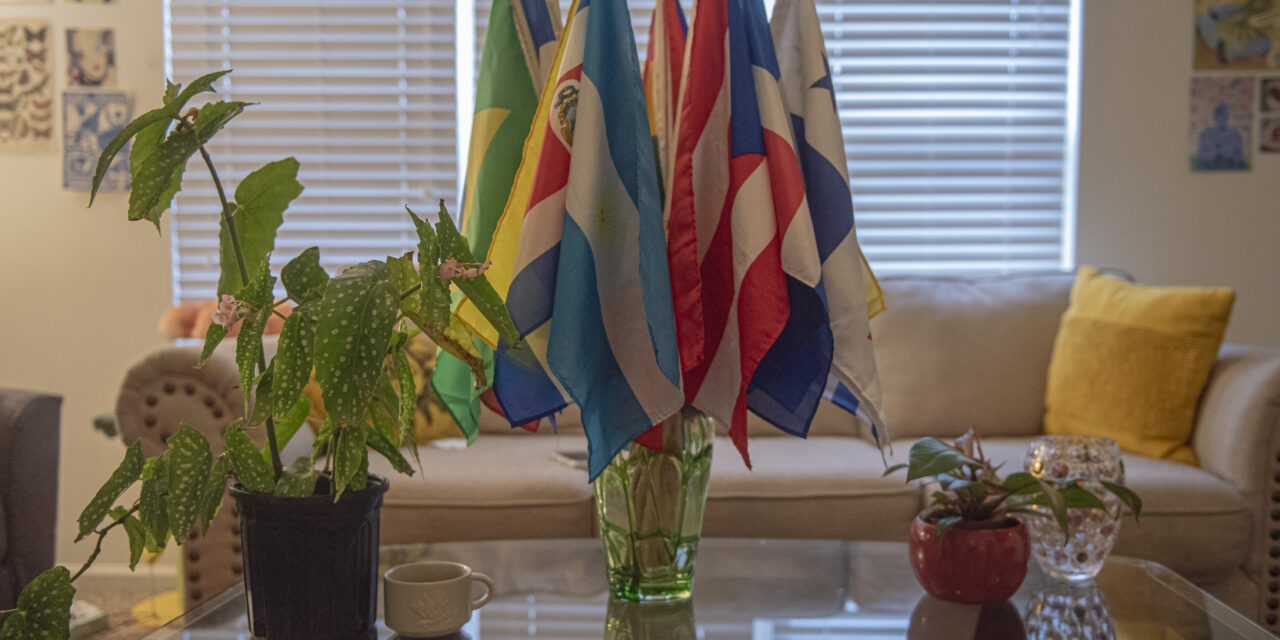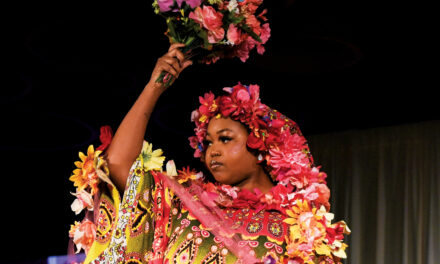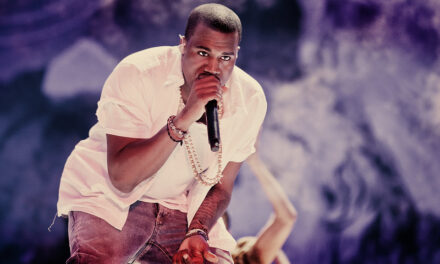Image by Kaela Belingon, Photo Editor
Flags of multiple South American Countries
Growing up, I never really saw myself or anyone that looked like me in any of the movies I watched. There are very few instances where I felt seen in any and all of the media I consumed. Even now as a young adult, I still can’t think of many characters that remind me of me.
The majority of the Latine characters that I do see in the media are inaccurate, offensive and just nothing like me or any of the Latines I know. The US has a problem with poorly depicting and stereotyping Latin people, even till today.
There are a number of stereotypes that depict Latines in the media including, the criminal, the spicy Latina, the Latin lover and the immigrant among others.
She’s hot, speaks with an accent and is always wearing tight fitting clothes, she is the “spicy Latina”. This stereotype depicts Latin women as lusty, tempestuous, passionate and hot tempered. Often referred to as the “Harlot,” the Spicy Latina is a female Latin character that serves as nothing else but arm candy for the (white) man she’s with. The most famous example being Sofia Vergara as Gloria Pritchett in Modern Family. Gloria is loud, emotional and constantly dressed in tight fitting clothes.
One of the oldest Latin stereotypes depicts Latin men as sexy lady’s men who typically have very thick accents from their country of origin. The Latin Lover, similar to the Spicy Latina, is an overtly sexualized Latin man who is there to “woo” any and all women.
The thing I saw the most when it came to my representation was always being depicted as the weird foreigner. They have a thick accent, have weird customs and are always speaking a foreign language. Oftentimes the butt of every joke, the immigrant stereotype is among the most popular for depicting Latines.
The American media has an obsession with depicting a life of crime. And who better to do this with than the foreigner. There are multiple depictions of cartels and gangs in Latin America, and they almost always have an American perspective on it.
Brownface is a popular phenomenon in which actors make-up to imitate the appearance of a brown- or dark-skinned person (typically one of South Asian, Middle Eastern or Latin American origin or descent). Although this phenomenon has been around for as long as media has existed, this practice still continues in the 21st century. This phenomenon has been seen time and time again when it comes to biopics depicting Latine figures.
Most famously, Natalie Wood and George Chakiris participated in brownface for the filming of West Side Story. Wood and Chakiris, both white, applied brown paint to their skin to portray siblings Bernardo and Maria, Puerto Rican immigrants. Rita Moreno also participated in brownface for the film despite herself being Puerto Rican.
Though many think that brownface is a phenomenon that doesn’t occur anymore as “West Side Story” premiered in 1961, brownface still continues to happen even in the 21st century. One of the more known instances of this was Angelina Jolie’s portrayal of Mariane Pearl, an Afro-Cubana, in the 2007 film “A Mighty Heart.” Zoe Saldaña, an Afro-Latina, wore skin darkening makeup and facial prosthetics for her portrayal of Nina Simone in the 2016 biopic “Nina.”
Oftentimes American media depicts Latin people as Spanish speakers. Though it is not uncommon for Latines to speak Spanish, Spanish is not the only language spoken by Latin Americans. Not only do these characters speak Spanish, but many of the actors cast to play these characters don’t even speak the language themselves.
This stereotype erases the countless other countries and cultures that are also Latine and pushes the narrative that only Spanish speakers can be Latin. As someone who struggles with speaking Spanish, I always thought less of myself for this and it never helped that every Latine I saw on my screen would also remind me of this.
The entertainment industry has had a longstanding history of hiring non-Latin people to portray Latines. Most famously and recently being Giancarlo Esposito as Gus Fring in “Breaking Bad” and “Better Call Saul.” Esposito, of Danish, Italian and African-American descent, portrays a Chilean-American in the show and “speaks Spanish” regularly throughout the series.
Netflix’s “On My Block” faced actual controversy for casting Ronni Hawk as Olivia. Hawk, who claims to be part Latina faced backlash and criticism for her portrayal of the character, specifically for poorly speaking Spanish. The casting of Hawk as Olivia was so controversial that the writers for the show ended up writing her out of the show by killing her character off.
Hollywood often gets away with casting non-Latin people to portray Latin characters so long as they have the “Latin Look.” Why is that the majority of Latin characters all look the same? Tan skin, brown eyes, thick straight black hair. Somehow you can’t be Latin if you don’t have “the look.”
It is common to see non-Latines play Latines and it’s also common to see Latines play characters from different cultures. I’m not saying that Latines can’t portray Latin characters from different countries, but I am saying that there should be some effort made to accurately cast people that are from where the character is from.
Most recently, Bad Bunny, a Puerto Rican, portrayed a Mexican character in the movie Bullet Train. All depictions of the character are accurate, despite the Spanish spoken by him. The artist was initially cast as the first Latine superhero in Marvel despite the character being Mexican.
In 2021, the Broadway hit, “In the Heights,” was turned into a movie musical of the same name. Many praised the film and broadway show for its representation of Latin people, specifically Dominicans, only the writer of the show and most of the actors in the original cast aren’t Dominican. The music, the slang spoken by the characters, and pretty much everything to do with this musical behind the scenes, had nothing to do with Dominicans. The creator of this musical, Lin Manuel Miranda, is actually Puerto Rican.
The film faced a great deal of backlash from excited audiences when the cast was announced and there were almost no Afro-Latinos or Dominicans in a movie about Dominicans. There are only three Dominican actors in the main cast and only one of them is a main character. How is it that a film about an extremely diverse part of a diverse city casts people who all look the same?
Many ask well why does any of this matter? Dominican, Puerto Rican, Cuban, Mexican, Argentinian, Chilean, what’s the difference? They’re all Latin, they all speak the same language and the cultures are similar. Though there are a lot of similarities between Latine countries, each country has its own distinct culture.
If I were to make a movie about the United States that portrays American slang, music and culture, but then casts only Canadians and only references Canadian culture… you see where I’m going?
In 2023 Latines are still represented as a homogenous group who all look the same, speak the same and act the same. But how many times do we have to tell y’all WE ARE EXTREMELY DIFFERENT. I mean it’s called a diaspora for a reason. The perpetuation of these stereotypes that continue the biases held against Latines do nothing but put us in harm’s way.
Latines come from rich cultures with deep rooted histories. We are so much more than just foreigners, criminals or lovers.





